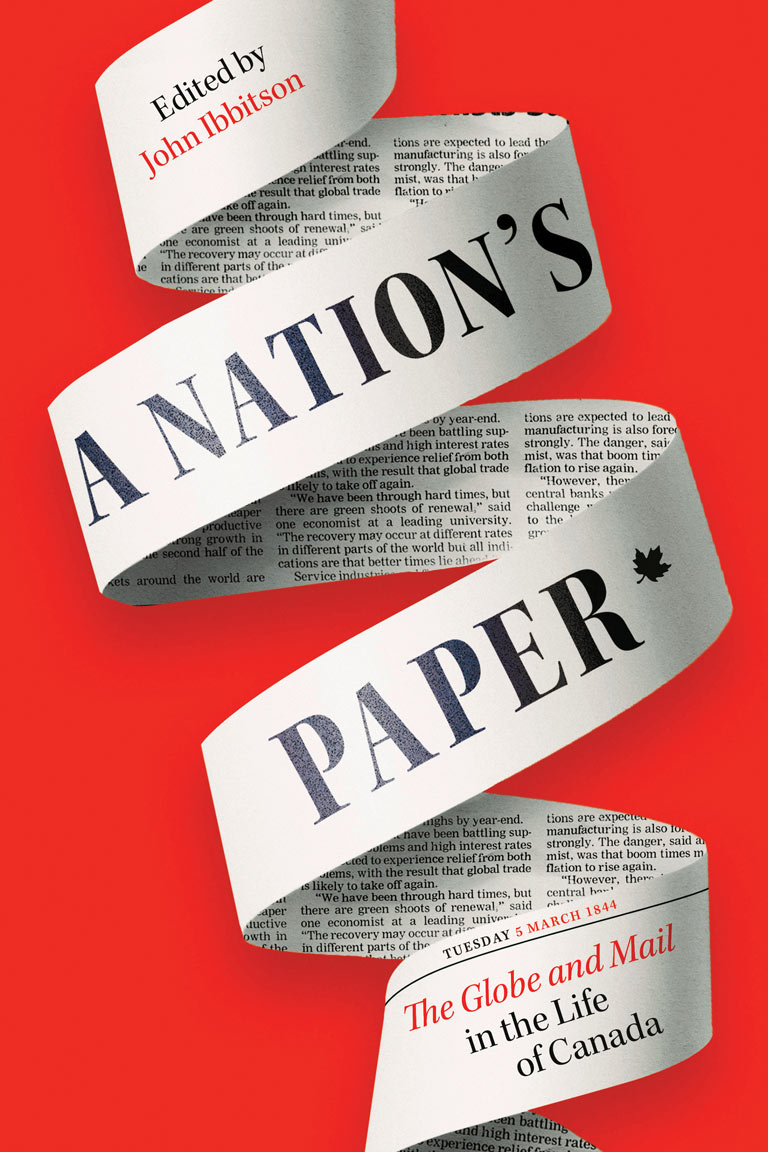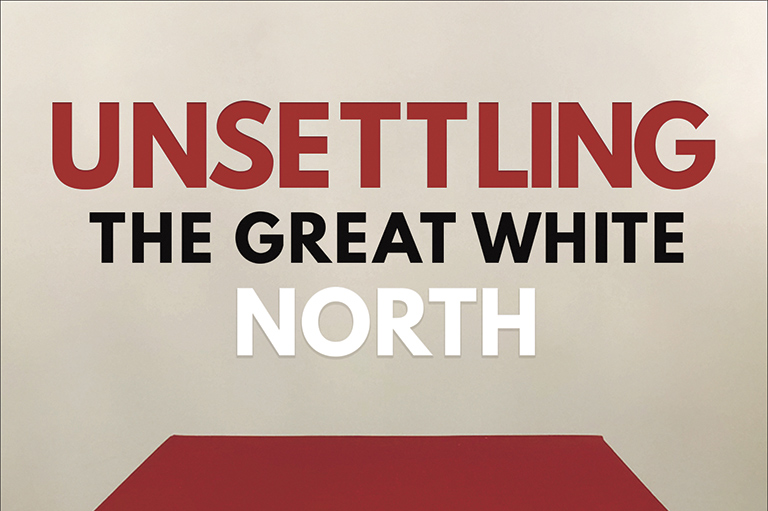A Nation’s Paper

A Nation’s Paper: The Globe and Mail in the Life of Canada
edited by John Ibbitson
Signal
336 pages, $45
There was a time not long ago when newspapers were a vital thread in the fabric of daily life in this country. The Globe and Mail was prominent back then. It still is today. The Globe (as it’s generally known) marked its 180th birthday in 2024 by publishing A Nation’s Paper: The Globe and Mail in the Life of Canada.
The newspaper’s roots extend back to its 1844 founding by George Brown, a reform-minded liberal who was one of Tory leader John A. Macdonald’s political archrivals. In 1936, long after Brown’s 1880 death, the newspaper merged with its long-time conservative rival the Mail and Empire. Over the years since, boardroom dealings have reshaped the business operations and editorial tone of Canada’s self-anointed “national newspaper” and “paper of record.”
Never mind that most people who live outside the cozy confines of Central Canada have never been regular readers of the Globe. In Prince George, B.C., Moose Jaw, Saskatchewan, or Halifax the paper is dismissively referred to as the “Toronto Globe and Mail.” Despite that, Brown’s newspaper has always been read by Canada’s political and business elites. That’s what really counts, and it’s what gives the paper its heft.
That reality also serves as the starting premise for A Nation’s Paper. Collectively, the Globe reporters and editors (both past and present) who are the book’s contributors make a strong argument in support of the assertion that the newspaper has played a significant role — even an outsized one — in myriad aspects of this country’s development.
With 7 uniquely curated newsletters to choose from, we have something for everyone.
“Our goal was not to write a history of Canada or a history of the Globe and Mail,” editor John Ibbitson (who is one of the newspaper’s veteran political columnists) explains in his introduction to the book. “Instead, we searched for issues and events in which the paper intersected with the life of the country, influencing its course.” In that, they’ve succeeded admirably.
Each of the thirty chapters in this book is an essay of about 2,500 words that explores a specific topic. The range of subject matter is diverse — everything from the Globe’s involvement in and reporting on Confederation to the scandals, regional tensions, linguistic debates, racial divides, economic developments, international relations, constitutional squabbles, and so much more that define Canada. While that may sound like a heavy read, it’s not.
All the essays in A Nation’s Paper have been published in the pages of the daily newspaper. Without exception, they’re concise, insightful, and easy reading. And, to their credit, several of the writers take a critical look back at the Globe’s at-times-blinkered approach to news and opinions. That’s especially true of the essays that chronicle the history of the newspaper’s approach to news and opinions about Indigenous people, gender inequalities, racial discrimination, LGBT issues, anti-Semitism, and Western alienation.
Advertisement
Kelly Cryderman, the Globe’s Calgary-based columnist, succinctly summarizes the latter — and so much more — when she quotes from an 1863 Globe article about the place of the “magnificent empire” between the Great Lakes and the Rocky Mountains in a presumed future united Canada. The nineteenth-century writer mused about how “Our sons will occupy the chief places of this vast territory, we will form its institutions, supply its rulers, teach its schools, fill its stores, run its mills and navigate its streams.”
Times have changed. And, thankfully, so have Canada and the Globe.
As is the case in any collection of essays with such diversity and such a broad sweep, there’s some narrative overlap and repetition from essay to essay. However, none of it lessens the book’s appeal or its value.
It’s also worth noting that a carefully curated selection of archival photos provides a strong visual element. Add in the fact that proceeds from sales of A Nation’s Paper are going to the organization Journalists for Human Rights, and there’s yet another compelling reason to recommend this book as a worthwhile read.
We hope you’ll help us continue to share fascinating stories about Canada’s past by making a donation to Canada’s History Society today.
We highlight our nation’s diverse past by telling stories that illuminate the people, places, and events that unite us as Canadians, and by making those stories accessible to everyone through our free online content.
We are a registered charity that depends on contributions from readers like you to share inspiring and informative stories with students and citizens of all ages — award-winning stories written by Canada’s top historians, authors, journalists, and history enthusiasts.
Any amount helps, or better yet, start a monthly donation today. Your support makes all the difference. Thank you!
Themes associated with this article
Advertisement
Save as much as 40% off the cover price! 4 issues per year as low as $29.95. Available in print and digital. Tariff-exempt!




